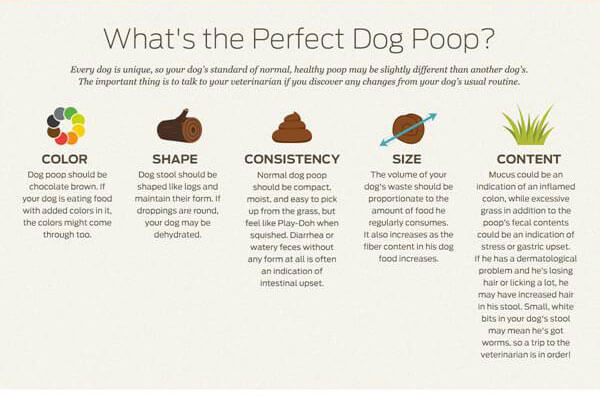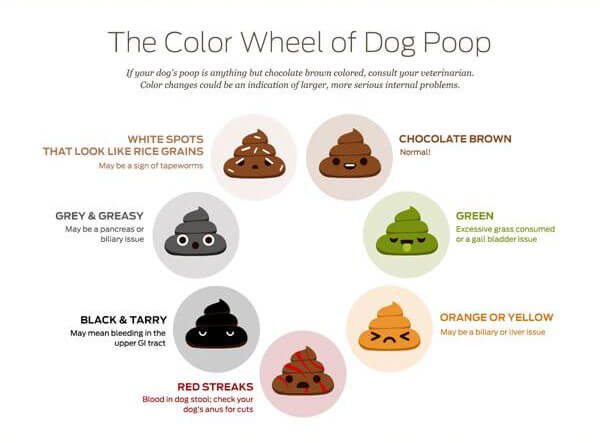As a responsible dog owner, you pay close attention to your furry friend’s health and well-being. One often overlooked but crucial aspect of canine health is their poop. Believe it or not, your dog’s stool can provide valuable insights into their overall health. In this article, we’ll guide you through the process of assessing your dog’s poop to determine if it’s healthy and what to look out for in case of any issues.

The Basics of Healthy Dog Poop:
Healthy dog poop should exhibit certain characteristics:
- Color: Normal dog poop should be brown. Variations in shade can occur, but drastic color changes may indicate underlying issues.
- Consistency: The consistency of healthy dog poop is typically firm, but not rock-hard. It should be soft enough to shape but firm enough to pick up.
- Shape: Normal dog poop is usually log-shaped, similar to a sausage. It shouldn’t be too loose or too hard.
- Odor: While dog poop is never going to smell pleasant, it shouldn’t have an overwhelmingly foul or putrid odor. A mild odor is normal.
What Healthy Dog Poop Looks Like:
Healthy dog poop can vary slightly from dog to dog, but here’s what it generally looks like:
- Brown in color
- Well-formed and log-shaped
- Moist but not overly wet
- Easy to pick up
- Mild odor that is not excessively foul

Signs of Unhealthy Dog Poop:
Now, let’s explore what abnormal dog poop may look like and what it could indicate:
- Diarrhea: Loose, watery, or frequent stools can be a sign of gastrointestinal upset, food intolerance, or infection.
- Bloody Stool: Blood in the stool can indicate various issues, including parasites, colitis, or more severe conditions, and should be addressed promptly.
- Mucus: Excessive mucus in the stool can be a sign of irritation or inflammation in the gastrointestinal tract.
- Unusual Colors: Poop that is unusually light, dark, or green can indicate issues with digestion or diet.
- Hard and Dry Stool: Hard, dry stool can be a sign of constipation or dehydration.
- Straining: If your dog strains excessively while trying to poop or cries out in pain, it could be due to constipation or an obstruction.
When to Seek Veterinary Attention:
If you notice any of the following signs in your dog’s poop, it’s essential to consult your veterinarian:
- Persistent diarrhea or changes in stool consistency
- Blood in the stool
- Mucus in the stool
- Abdominal discomfort or pain while pooping
- Unexplained weight loss
- Vomiting alongside changes in stool
- Worms or unusual foreign objects in the stool

Your dog’s poop can serve as a valuable indicator of their overall health. Regularly monitoring their poop’s color, consistency, and odor can help you detect potential issues early and seek prompt veterinary attention when needed. Remember that diet changes, stress, and minor digestive upsets can occasionally cause temporary changes in stool, but persistent or severe abnormalities should not be ignored. By staying vigilant and informed, you can help ensure your furry companion enjoys a happy and healthy life.
